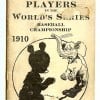Tesco's Clubcard Loyalty Program - Every Little Helps
Tesco –the third largest retailer in the world is definitely not a household name to most Americans, but given the aggressive growth and use of its Clubcard customer loyalty program this could change very soon. The supermarket giant remains the leader in the tightly held British grocery market that is often criticized as being an oligopoly. Dubbed the "Big Four", nearly 75% of the U.K. grocery market is filled by Tesco, Sainsbury's, Morrissons and the Wal-Mart owned Asda's. Tesco's share is almost double that of its closest competitor. What keeps Tesco on top? Low prices? Friendly service? Fans and critics alike cite the advanced data collection, customer loyalty software and marketing techniques of Tesco's Clubcard loyalty program as the reason for their competitive edge.
In the mid 1990s, Tesco was a distant second to Sainsbury's in the grocery race and decided to implement a customer loyalty program. A test in three stores proved fruitless at which time Tesco hired the marketing firm of dunnhumby to develop a new program. By 1995, the Clubcard launched with nearly instant success as Tesco enjoyed a large increase in customer loyalty and retention. Within the first five years sales had risen over 50% and by year ten Tesco had 10 million registered users to the program.
The motivations for joining the program are clear and clever. For every pound spent, the consumer earns a point towards cash vouchers that can be used in a variety of ways both in a traditional store and online. Users are also sent coupons for products they frequently buy and for carefully selected products that Tesco believes they might buy with a prompting in the form of a coupon. Clerks are trained to ask for the loyalty card with every sale and this reminds the holdout customers that potential savings are being missed—further motivating a person to join. The latest advertising catchphrase used by Tesco is succinct and apt (especially in today's economy): "Every little helps". The company has stated that over £1 billion have been given out in cash vouchers through the end of 2002. It is easy for any consumer to want a piece of this. The upside for the customer is a free program with customer rewards given back for shopping at a store the majority of them probably shop at anyway. The only downside is relinquishing some personal information. Motivating a customer to join Clubcard has been fairly easy for Tesco, but retaining customers is always a challenge.
The kind of information gathered for the Clubcard program has evolved with the growth of the company. A typical application might ask for name, age, and address as well as other seemingly innocuous pieces of information. These simple bits of demographics coupled with purchase history was enough at the onset for Tesco to begin to focus on the demands and tastes of their customers and to develop the best way to sell to them. Tesco realized that better information leads to better results and created Crucible—a massive database of not only applicant information and purchase history, but also information purchased and collected elsewhere about participating consumers. Credit reports, loan applications, electoral roles, Office for National Statistics, and the Land Registry are all sources of additional information that is stored in Crucible.
Further Reading
This extremely aggressive approach has given Tesco a distinct competitive advantage. In addition to the Crucible database, a new software system dubbed Zodiac profiles and targets the consumer and region as a whole. This improved double punch of Crucible and Zodiac as parts of a better brand of customey loyalty software better allows Tesco to understand regional differences and makes decisions regarding store locations, type of coupon or promotions much more accurately. It also allows them to see markets and products where they might be under-performing, which will allow them to focus their efforts in a precise manner. Tesco also sells data is has gathered to other consumer groups.
For all the success, Tesco has faced many challenges and the Clubcard program does have disadvantages. The British tend to be more private in nature than Americans and many consumers feel the information gathered about them by Tesco is a violation of their rights. Tesco has developed their database carefully to avoid conflicts with the Data Protection Act, but this has not stopped lawsuits and court challenges from various newspapers and consumer groups. Privacy conscious consumers have started websites like cardexchange.org that encourage customers to swap loyalty cards much like baseball cards to thwart businesses from tracking their shopping habits. Tesco must try to lure the holdout consumer who feels the program is too Orwellian if they wish for the same level of growth to continue.
The loyalty card program is here to stay and Tesco and the ubiquitous Tesco card continue to stave off challenges whenever possible. In recent years a small group of shops have banded together to form a loyalty card program call Nectar which can be used at multiple businesses. In 2009, Tesco has announced a £150 million campaign to try to increase the number of card users to 16 million and win back marketshare from the rival Nectar program. It will be accomplished through new points policies and greater flexibility of redemption of points. This is the first serious change to the program since its inception. If they are successful in boosting the users and luring others back, they stand to gain millions of pounds of profit. "Every little helps", but mostly it helps Tesco's bottom line.









